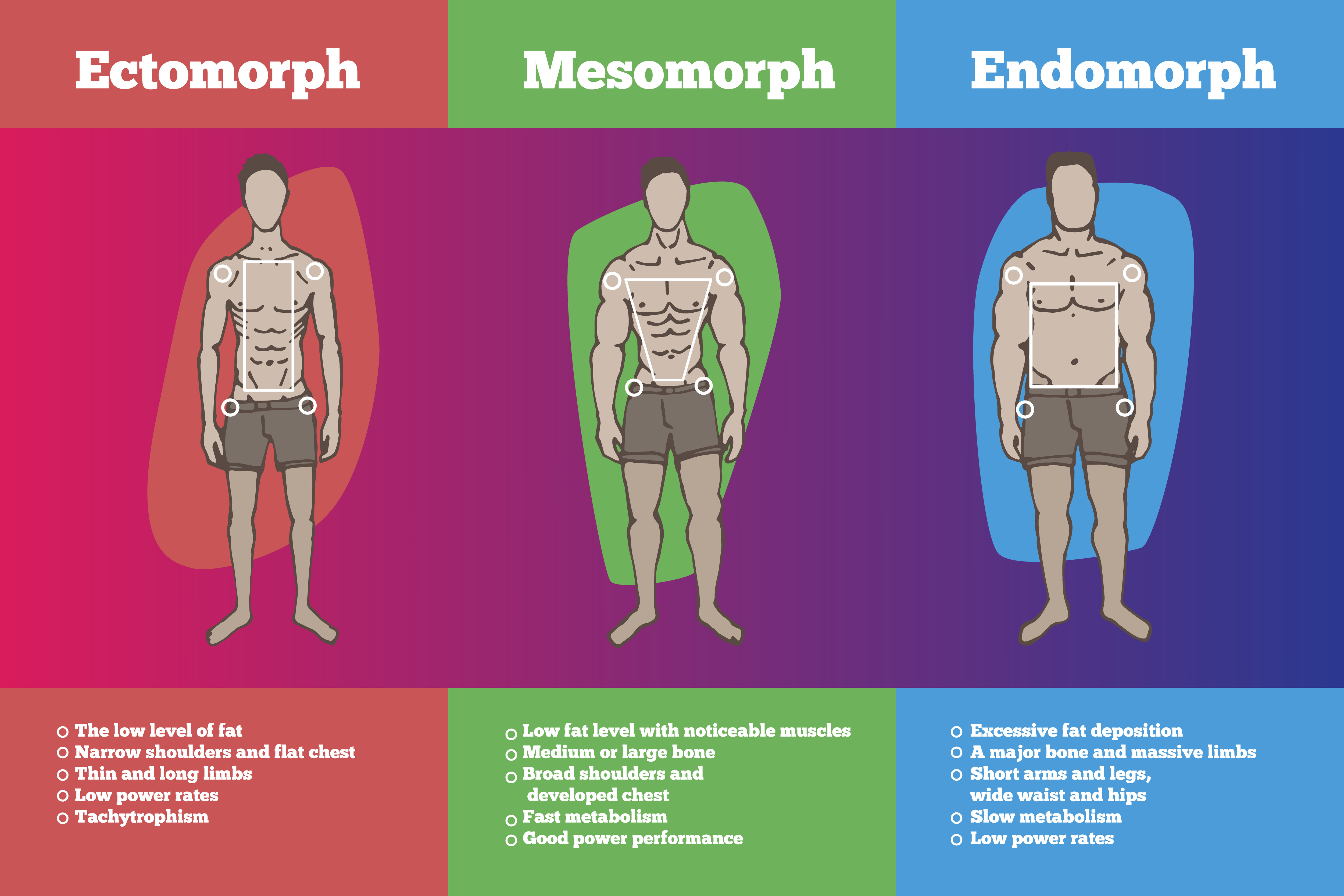Building Muscle as an Ectomorph - A Definitive Guide
Understanding Somatotypes
The concept of dividing humans into three body types, ectomorph, mesomorph, and endomorph, based on their physical appearance was originally conceived as a psychological model in the 1940s to determine personality traits and behaviors. However, recent studies have concluded that this model provides little value in designing effective nutrition and training programs. While genetics do influence one’s potential, focusing excessively on “body types” often leads people to make excuses rather than take action. The human body is far more complex than can be characterized by just three categories.

Prioritizing Consistency and Diet
For anyone striving to gain muscle, especially those with an “ectomorph” body type, consistency in the gym and precision with diet are key. Frequent fluctuations in training frequency, volume, and intensity will stall progress. Similarly, an inaccurate understanding or tracking of caloric intake and macronutrient distribution can negate even the best workout plans. Those looking to build bulky physique and increase muscle size must commit to meticulous tracking and optimization of both nutritional intake and gym routines.
Designing an Effective Full-Body Routine
When muscle growth is the goal, it’s generally best to follow a full-body training split performed 3-5 times per week rather than isolating body parts on separate days. This full-body approach allows for sufficient weekly volume across all major muscle groups. The workout should incorporate compound exercises like squats, rows, presses, and pulls that recruit multiple muscles simultaneously and also finish with 2-3 direct isolation exercises per body part. For example, a push day may include bench press, overhead press, and then flys and triceps extensions. Keeping workouts to less than one hour allows sufficient recovery between sessions.
Focusing on Form over Weight
Those new to strength training, especially ectomorphs, often commit the mistake of excessively focusing on how much weight they can lift rather than nailing down impeccable exercise technique first. Perfecting form on each movement should take far higher priority over accumulating weight on the bar. Poor form can drastically increase injury risk and also force compensations that hinder muscle recruitment. When lifting, concentrate on maintaining control throughout the full range of motion and squeeze targeted muscles at peak contractions rather than swinging up heavy weight. Form check videos are a smart tool for objectively analyzing and fine-tuning technique.
Implementing Strategic Nutrition Changes
No workout program will overcome an inadequate calorie surplus and lack of proper macros. Ectomorphs especially tend to struggle gaining weight due to their naturally higher metabolisms. Aim to gradually increase daily caloric intake by 500 above maintenance levels, get at least 1g of protein per pound of bodyweight, and distribute calories evenly among 5-6 moderate to large meals throughout each day. While whole foods should form the staple diet, 1-2 daily snacks of nutritious mass-gainer shakes can help boost calorie and protein levels without relying on junk food. Track intake for at least a month to dial in an individualized plan optimized for muscle growth.
Developing Patience and Tracking Progress Over Time
Significant muscle gains require consistent effort over extended periods of time, potentially years for some. Frustration will easily set in if progress is assessed too frequently or compared against others’ trajectories which can vary greatly based on genetics. Instead, focus on outdoing personal bests in the gym and note body composition changes every 3-6 months through comparisons of progress photos, measurements and clothing fit. Celebrate sustained effort over changes in appearance. With dedication, even those with naturally “ectomorphic” constitutions can transform physiques towards their goals.
Emphasizing Compound Exercises
For building an impressive physique full-body compound movements should form the core of any intermediate routine. Exercises like squats, shoulder presses, rows, pull-ups, chin-ups and dips recruit major muscles across the entire body simultaneously which leads to incredible functional strength gains and an esthetically pleasing balanced physique. Intermediate ectomorphs looking to gain significant size and strength should focus on gradually increasing weight on squat, deadlift, overhead press, bent over row and pull up variations. Mastering challenging progressions of these most fundamental lifts like pause squats or single arm rows will maximize full body muscle and strength development.
Incorporating Isolation Exercises Strategically
While compounds are king for packing on size most efficiently, direct isolation work plays an important supporting role by zapping weak points and providing additional workload to specific lagging muscle groups. Incorporate 2-3 isolation exercises per major muscle group at the end of workouts once strength on primary compounds stalls. Exercises like bicep curls, triceps extensions, calf raises, leg curls and flys target specific areas that receive less focus with compounds alone. Progressive overload can be achieved through methods like drop sets, supersets, partial reps and high reps. Staying strategic by never spending more than 10 minutes isolating any one body part ensures workouts don’t become tedious.
Sample Routine for Intermediate Ectomorphs
Here is an example full body 3 day a week intermediate routine tailored for ectomorphs: Day 1:
- Squats 4x6-8
- Overhead Press 4x6-8
- Pull Ups 4x6-8
- Triceps Pushdowns 3x12
- Calf Raises 3x15-20 Day 2:
- Deadlifts 4x6-8
- Bench Press 4x6-8
- Barbell Rows 4x6-8
- Bicep Curls 3x12
- Ab Rollouts 3x15 Day 3:
- Front Squats 4x6-8
- Incline Press 4x6-8
- Seal Rows 4x6-8
- Face Pulls 3x12
- Hanging Leg Raises 3x15
Progress overload weekly through increasing either reps, sets, or weight depending on individual performance. Deloading every 4-6 weeks is also recommended. Always let form and recovery take priority over linear progression.
Conclusion
With consistency, patience, and constantly refining one’s training and nutrition strategy, it is certainly possible for those deemed “ectomorphs” to achieve an impressively muscular and strong physique over time. Focusing excessively on unproven body type classifications often leads to excuses rather than real-world progress. The keys always remain matching effort in the gym with precision in tracking macros, calories, and gradually overloading the body through challenging yet sustainable progression. Continuous learning from experience will ultimately dictate what works best for each individual.
